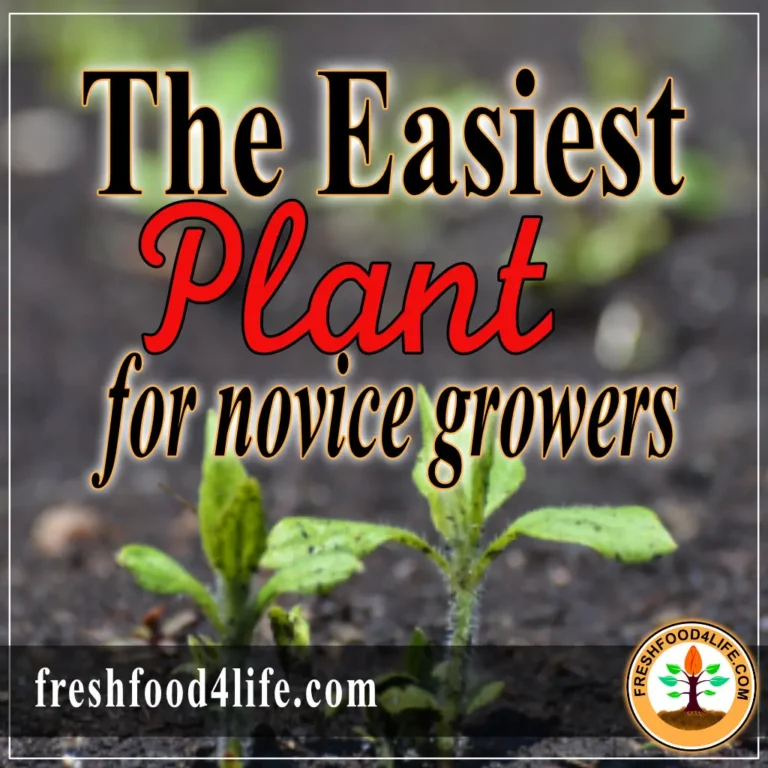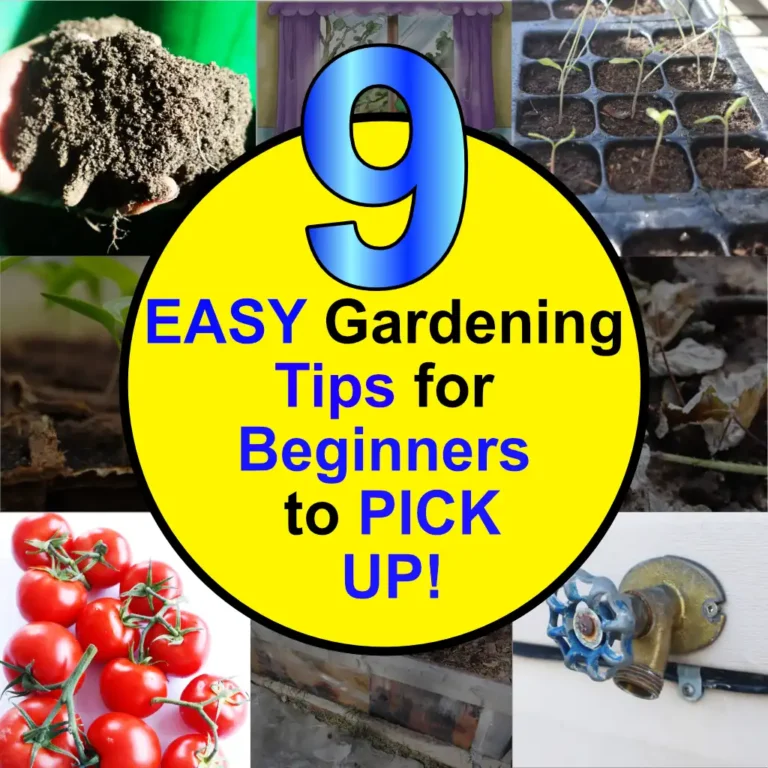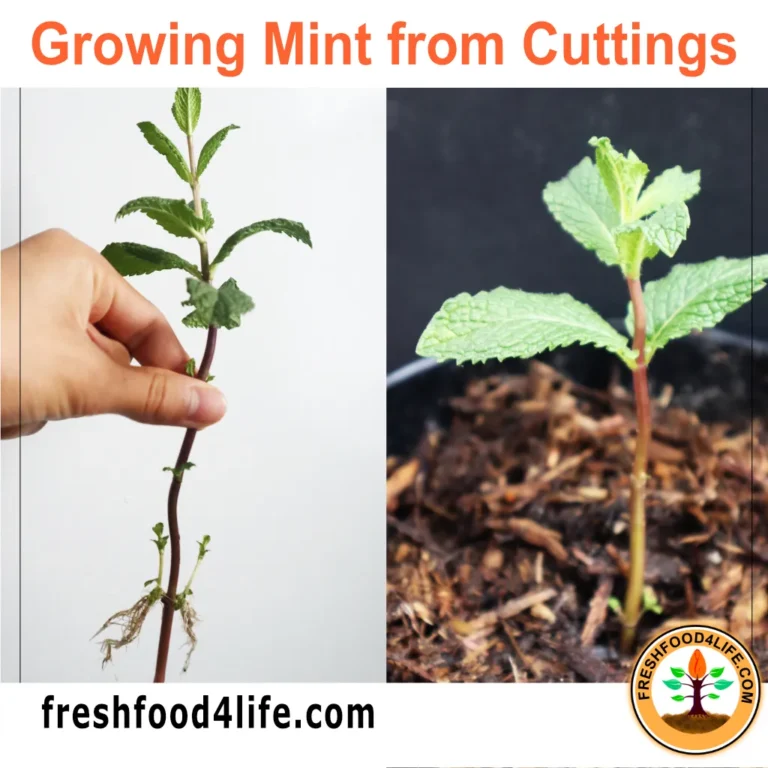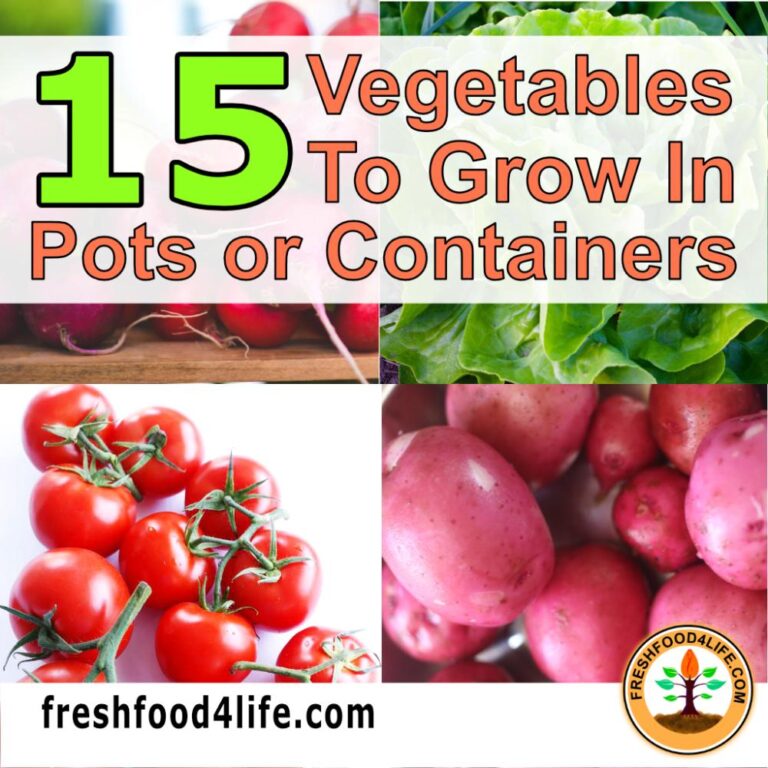Published: December 31, 2024 Last Updated: January 6, 2025
What is an Aquaponics GardenAquaponics Garden Aquaponic gardening is a food production method that combines aquaculture (raising fish and other aquatic animals) with hydroponics (growing plants in water) in a recirculating ecosystem. This integrated system uses the waste produced by fish as a natural fertilizer for plants, eliminating the need for synthetic fertilizers and minimizing water usage.

An aquaponic gardenAquaponics Garden Aquaponic gardening is a food production method that combines aquaculture (raising fish and other aquatic animals) with hydroponics (growing plants in water) in a recirculating ecosystem. This integrated system uses the waste produced by fish as a natural fertilizer for plants, eliminating the need for synthetic fertilizers and minimizing water usage. is a system of gardening that combines land gardening with water gardening, including the use of water creatures. In essence, you get into minding fish, which can be for pets or for food, and the fish water is used to grow your land plants. It is an ecosystem where soil is not used. You have aquaculture which is the growing of fish and you have hydroponics which is the growing of plants in a water medium. Both systems are successful as independent systems for creating food. The aquaponic garden is the method of combining both systems to let the inputs from one system become the outputs for the other system, and vice versa.
Table of Contents
How An Aquaponic Garden Works
Here’s a high-level overview of how the system is supposed to work.
- Your Fish Culture
You get your tank and you raise fish. The fish get food (inputs) from you and they output pee and poop (outputs) into their fish water.
- Your Land-Plant Culture
You take the nutrient-rich (output) water from the fish tank and circulate that water to the root system of your plants. The plants extract all the nutrients which becomes their inputs. The plants use those inputs to grow big and healthy. The output from the plants is clean water. This clean water is then fed back to the fish tank.
The system is closed and technically should become self sustaining if you make one or two tweaks.
Benefits of a Home Aquaponic Garden

You can benefit greatly from a small home aquaponic garden system if you like eating fish and you love fresh salads and veggies from the gardenhome garden A designated area around a residential property where individuals cultivate plants, fruits, vegetables, or ornamental plants for personal use. It comprises a farming system that combines physical, social, and economic functions on the area of land around a family home, providing a sustainable source of food and other benefits for the household, extended family, and friends.. Let’s look at the benefits.
Sustainability
Sustainability is the buzzword right now for the gardening world. Whatever you’re doing must be sustainable. What is sustainable? IT means you can keep it going for a very long time. How is this system sustainable? The fish are living creatures which produce nutrient-rich waste (outputs) daily which can be fed to the plant roots daily. The plant can clean the water daily which can be fed to the fish. Thus the system becomes self sustaining. This self sustaining aspect of an aquaponic garden system really adds to a household’s ability to fight against food insecurityFood Insecurity Food insecurity is a sanitized way to describe the risk of hunger or starvation. It refers to household-level economic and social condition represented by limited or uncertain access to adequate food. It is not necessarily synonymous with hunger, although hunger can be an outcome of food insecurity..
Minimal Carbon FootprintCarbon Footprint A carbon footprint is the total amount of greenhouse gases (GHGs), primarily carbon dioxide (CO2), emitted directly or indirectly by an individual, organization, event, or product throughout its lifecycle. It can come from use of fuels for transportation, heating, cooling. It can also come from mining, raw material extraction, manufacturing, transportation, and disposal. Carbon footprint can fall broadly into 4 types: personal, product, organizational, and event.
A low carbon footprint is increasingly important in today’s climate-conscious world, focusing on the CO2 emissions associated with products and activities. For instance, a T-shirt made in China has a greater carbon footprint than locally sourced wool socks. Everything contributes to one’s carbon footprint, including technology, food, and clothing, prompting individuals to seek local items to minimize their impact. Eating homegrown food is a significant way to reduce this footprint, and an aquaponic garden can further decrease the carbon footprint of fish in your diet. Plus you can have better food security when you know you can grow it in your home and eat it whenever you want.
Low Environment Impact
One principle around doing this small home aquaponic gardening is stewardship of the earth and the resources you have. Growing your own food saves you money at the grocery and it helps to collectively reduce the greenhouse emmissions it took to make your meal. When you grow your own tomatoes or lettuce for example, you save enormous resources used to create the plastic packaging for those items in the local supermarket.
You also have less packaging waste to throw away because you picked it from the garden instead of the store isle. You save gas from not having to drive to and from the store. There are many ways a well designed home aquaponic systemAquaponics Garden Aquaponic gardening is a food production method that combines aquaculture (raising fish and other aquatic animals) with hydroponics (growing plants in water) in a recirculating ecosystem. This integrated system uses the waste produced by fish as a natural fertilizer for plants, eliminating the need for synthetic fertilizers and minimizing water usage. help you make a low impact on your environment.
Fresh Naturally Grown Produce
There is really nothing quite like the taste of picking that freshly grown cucumber or tomato from your garden and taking a bite. The sweetness of the fruit of your effort is really invigorating. When you grow your own food or fish, you know exactly what inputs you put into the system and can feel confident of the outputs you are getting. When you can basically snack in your garden or carrots, celery, tomatoes, or cucumbers, you know that you’re doing the gardening right.
Fresh Home Grown Fish
If you love eating fish, you know how much effort it is to get it. If you buy it from a supermarket or grocery, you know that the carbon footprint is high and it probably took a lot of energy to get that fish from an ocean somewhere to your plate. However, with aquaponic garden systems, you are growing your fish just like you would grow chickens, turkeys, or ducks.
The difference is that fish won’t run anywhere so you don’t need to worry about that. Chickens might scratch up your garden if you let them but fish just stay in their tank and that’s it. It takes a lot less effort and resources to mind fish than chickens, ducks, turkeys, or bigger animals. And if you like fish, you’ll have them conveniently located in your tank.
Setting Up Your Own Home Aquaponic System

Now that you see how beneficial having an aquaponic garden system can be, let’s talk about the nuts and bolts of putting one together. I’ll give you as much details as I can to help you go in the correct direction but remember this is not a tutorial so you will have to supplement your knowledge in a few places.
Equipment Summary
Here is a summary of the kinds of things you’ll be using:
- A container for the fish. (aka fish-tank) You want a contain large enough and deep enough so that your fish can swim and grow comfortably in your space. However the larger the volume of water the container holds means that it must be very strong.
- A container for the plant growing bed. This can be shallower than the fish tank to allow you to spread out the plants.
- A water pump. This could be a smaller fish tank pump or a water fountain pump depend on the volume of water being circulated between the tank and the grow bed.
- Air pump/Airstone. Most likely because of the size of the tank you will a device to oxygenate the water for the fish.
- PVC pipes to connect the system. You’ll need PVC pipes, elbows, and pipe joining adhesive to join the pipe pieces together.
- Growing medium. You’ll need the growing medium such as small stones or clay pellets. You’ll also need rockwool cubes and growing baskets.
- Fish food. You’ll need a good quality fish food for your fish to eat well and poop well.
- Beneficial bacteria (probiotic). This bacteria should be present in the grow beds to help convert fish outputs into nutrients for the plant roots.
- Some seeds or young seedlings. These can be your herbs, vegetables, flowers, or other plants to grow.
- Electrical hookup. You will need access to electricity to run the water pump and airstone.
- Heat source. For countries that experience winter like us in Canada, you’ll need a heat source to keep your system from freezing if you plan to run it year round.
- Timer system. This helpful for putting the pump and air-pump on a timed interval system so they turn on or every 15 minutes, or every 30 minutes.
Choosing Your System
Now that you have something of a shopping list, you’ll need to know the dimensions of the space you’re going to house your aquaponic garden system. Whether you’re growing indoors or outdoors, remember that your plants want lots of light while your fish need shade so they don’t bake all day in the sun. Water and electricity should be close by. If you have your Freshfood4life.com Ultimate Gardening Journal (ISBN:978-1-77850-068-8) you can record your dimensions and rough sketch in the garden layout chapter. You could also note the electrical hookup and the water hookup.
Buying The Grow-Bed Medium
Grow Bed Medium: Your first choice is whether you want to buy gravel, river rocks, or clay pebbles for the grow bed medium for your plants. You can decide this based on cost and availability. You can get these stones from your big-box retailer, quarry, or hydroponic supply store.
Based on your dimensions look for a grow bed that is the width x length and about 8 to 12 inches high depending on your space availability, and the materials you can find. Try to not get a bed shorter than 6 inches. This is to ensure you have enough room to plant the plants.
Setting Up Your Fish Tank

You’ll need to setup your fish tank and run the system without any plants for a acclimatization period. The fish need to be comfortable with the system, the helpful bacteria need to coat the surface of the grow-bed medium. The types of fish you can use are based on your needs. You might decide to choose ornamental fish which you don’t eat like goldfish, or perhaps Tilapia or koi fish.
Remember to jot down your notes in your gardening journal as they will be helpful for you when you review and improve the process.
Water Quality Management
The next big thing for you is to manage the water quality for your fish and your plants. You’ll need to be able to test pHpH A measure of the acidity or alkalinity of a solution on a scale of 0-14, with 7 being neutral. In aquaponics it refers to water quality and its effect on nutrient absorption and the health of fish, plants, and bacteria., nitritesNitrites An intermediate form of nitrogen created in the aquaponics nitrogen cycle that needs further conversion to nitrates., nitratesNitrates A form of nitrogen that is used as nutrients by plants in an aquaponic system, produced by the nitrogen cycle, and water temperature. You can purchases these supplies from your local hydroponics store. If you’ve living in the city and using city water then DO NOT ADD Chlorinated water directly to the system. You will have to let that water sit and breathe for two weeks before using it in the system.
Plants To Grow
Now you’re finally ready to get growing your plants. If you start them from seed in the rockwool cubes and the containers then you simply add them into the system. If you purchased young seedlings from a nursery in a small flowerpot, you’ll have to remove the seedling, wash out all the soil, then slice a rockwool cube and wrap it around the plant roots, then place it into a seedling container. Then you can add that to the growbed. There are several plants to grow that will give you great results which include: Leafy Greens such as lettuce, spinach, kale, herbs such as mint, basil, cilantro, and microgreensMicrogreens Microgreens are young, nutrient-dense versions of edible vegetables and herbs. They are the seedlings of vegetables and herbs. They are typically harvested within 1-3 weeks of germination, when they have only their seed leaves or one set of true leaves. such as alfalfa, kale, radish.
Ongoing Garden Stewardship
Congratulations, you are now officially the steward of an aquaponic garden system. What do you do now?
Garden Journal
I mentioned it before but you should make use of your garden journal. We recommend the Freshfood4life.com Ultimate Gardening Journal (ISBN:978-1-77850-068-8) because we designed it for use for a wide range of gardens. You should make it part of your daily routine to feed your fish so note it in the journal.
While you’re doing that, test the water once a day if every other day when you become more experienced. Then when you know the system is working within the regular parameters, you can test once per week. Always record the test result in your journal and what steps/actions you took. It will be very helpful later. Read more about why a garden journal is the hidden tool you’re missing here.
Common Aquaponic Garden Issues

I’d love to tell you that the system will be perfect from day one and that you will never have any problems. However that is not the reality of being a gardener. There are always things which pop up. Just so you’re not caught unawares, let’s look at some of the things you might encounter some time in your aquaponic garden adventure.
- You might encounter algae growth. If you see that it means that the water is stagnant, with too much light and nutrients. Some solutions might involve increasing the intervals between the pump cycles and reducing the light.
- You might encounter plant pests. While the system should produce healthy plants which discourages pests, you might encounter bugs on your plants. You could introduce a natural predator like a ladybug, use a natural pest control option, or remove the affected plant.
- You might encounter fish diseases. This should be highly unlikely if your system is a closed system but your fish might be unhealthy if the water quality is bad. This is a bigger signal to you that your system is not filtering the water properly. Take steps to improve the water quality or remove some of the bad water and replace with good water. Check the pump, air pump, for any clogs. Quarantine your sick fish.
- You might see plants looking weak or lacking. It is possible that the inputs from your fish are insufficient or the plant was a transplant and so is experiencing transplant shock. You can add some supplements to the system and/or increase your fish feeding to increase waste production.
- You might experience equipment failures. You’re using a timer, pumps, and maybe grow-lights if indoors. You should keep some spares or spare parts on hand to fix any technical issues should they arise. You need to keep downtime to a minimum in this system. As a preventative measure, regularly clean your pumps, pipes, and lights.
Seasonal Adjustments

If you’re living in a part of the world that has winter, you have to consider what you can do when the temperature drops below zero. When it gets too cold, your plants will die. Your fish may also die in the cold if they are not specific to the climate. What can you do? Here are some ideas:
- Grow your aquaponic garden system in a controlled environment like a heated greenhouse or heated warehouse or make it a small system you can keep indoors in your home.
- If you have a bigger system but not a winter-proof location, for example, only a 3-season environment (spring, summer, fall), then you could decide to harvest all your plants and fish in the fall and just keep one or two males and females alive inside in an indoor aquarium. They can spend the winter indoors with you and the family until next spring when you reactivate the aquaponic system again.
- Stick with a small indoor system that you can keep active all year round inside your house. Maybe you only have 6 fish and can grow 6 plants at a time. That might be all you need for you. If you have a smaller system you keep in your house, you don’t need to worry too much about winter affecting your system.
Harvesting Routine
Part of setting up the aquaponic garden system is that it includes meat as well as veggies. You should have a harvest for your fishes in addition to a harvest for your plants. If you love fish then your fish would be home grown, low carbon footprint, and ready when you reach in and grab it.
When you harvest, record all the details in your garden journal so you can celebrate your big wins!
Conclusion
There are so many good reasons to give a home aquaponic garden system a try. It is easier than raising backyard chickens, and you don’t have to deal with chicken manure. It eliminates the need to haul around bags of soil, compost, or manure, It is a pretty easy way to get into growing your own food in a sustainable way and doing your part to fight against food insecurity. Though the upfront costs may be a little more, the payoff for the years to come if done correctly will be most valuable to you. Until next time, continue to learn and grow.
Read more about AquaponicsAquaponics Garden Aquaponic gardening is a food production method that combines aquaculture (raising fish and other aquatic animals) with hydroponics (growing plants in water) in a recirculating ecosystem. This integrated system uses the waste produced by fish as a natural fertilizer for plants, eliminating the need for synthetic fertilizers and minimizing water usage.: https://www.britannica.com/technology/aquaponics




